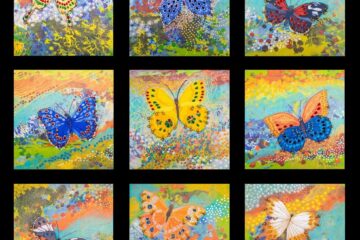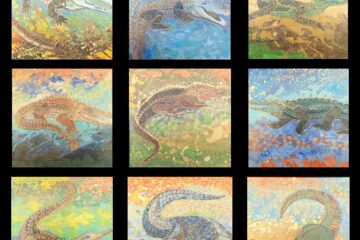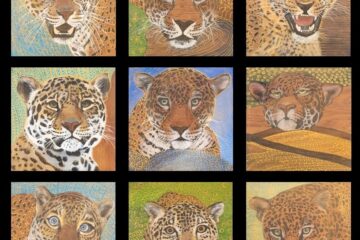THE MYTH OF ELDORADO
THE OWL
Before you read this blog, be welcome to read the following blogs first:
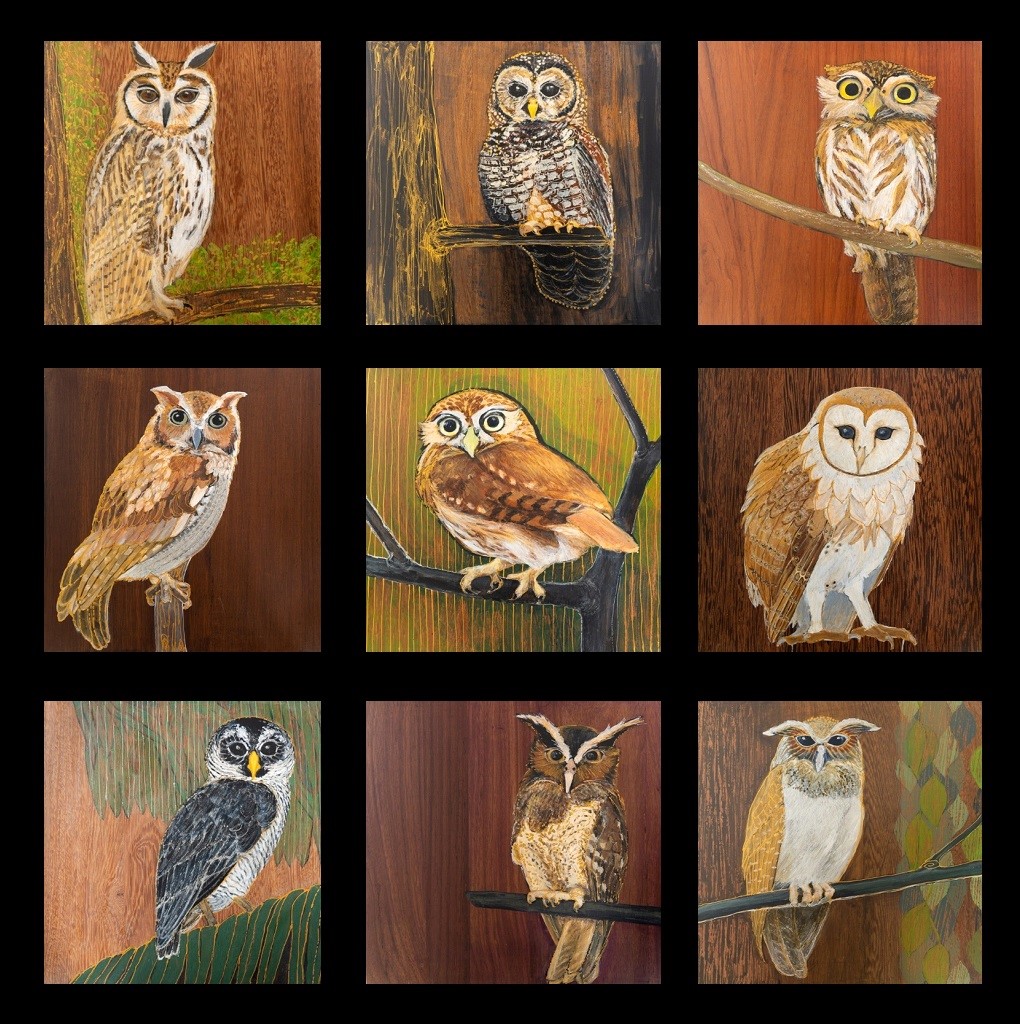
The owl of Athena
Suriname was a colony of the Netherlands and became an independent republic in 1975. Therefore, when I was born in 1952, I had the Dutch nationality. I acquired Surinamese nationality on Independence Day in 1975, since I had decided to stay in Suriname after senior high school and was studying art and art education here.
I grew up in a society in which the Dutch culture was the dominant factor. Greece is seen as the cradle of European civilization. That is why I knew the owl of Athena from the books even before I had seen a Surinamese owl in person. Owls do not fly happily around in Paramaribo like Grietjebies, Blawki’s and Stondofi’s, but hide between the leaves of trees, preferably in the forest, and the majority is only active at night. (Grietjebie = Pitangus Sulphuratus, English: Kiskadee; Blawki = Thraupis episcopus, English: Blue-gray Tanager; Stondofi = Columbina talpacoti, English: Ruddy Ground-Dove)
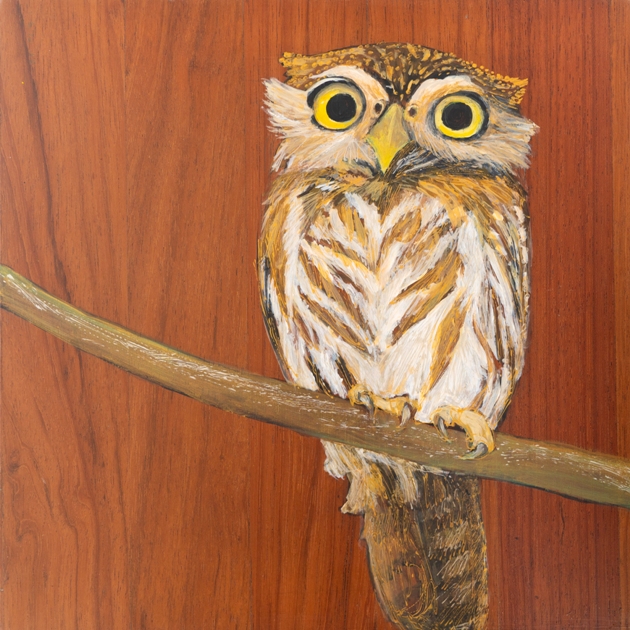
The Athena Owl is an owl that, in Greek mythology, represents or accompanies Pallas Athena, the goddess of wisdom. Roman mythology has Minerva, a goddess equivalent to Athena and she has an owl, too. In classical antiquity, the owl was therefore a symbol of knowledge, wisdom and sagacity. The owl of Athena was the first owl in my perception. He sat on Athena’s hand, arm or shoulder, or on a branch or a tree stump and looked at you with wide, wise eyes.

The owl as a spiritual animal
With Athena and Minerva in the background, the owl as a spiritual creature is bestowed with the following attributes: wisdom, intelligence, knowledge, strategy, curiosity, clairvoyance and a clear, lucid view of things. The owl also seems to be able to assist you in analyzing all the information you receive from your environment. You can more easily become aware of a person’s true motivations or be more conscious of the reality of a situation. This will help you to make the right decisions. It also helps you to see more clearly when faced with disconcerting or troubling experiences.
To me, Athena and Minerva did not differ from each other. The owl was, therefore, a mascot and a symbol for science, given all those universities and training institutes named after Minerva. Without really being aware of it, that idea persisted pretty much my entire life, somewhere deep down in my subconscious. Until I was introduced to Lechuza quite recently.
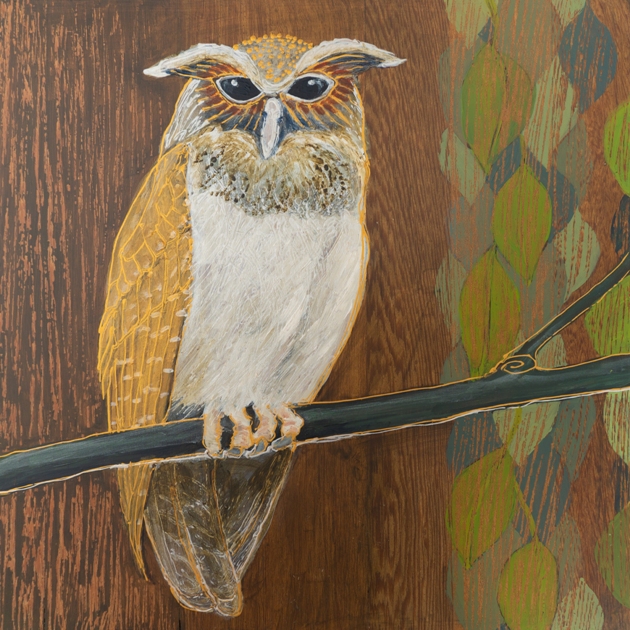
Lechuza
In search of myths and legends in the Mesoamerican region, I came across Lechuza at an early stage. I did not think of the story as particularly interesting and mixed the Lechuza legend in with most of the stories that arose after the missionaries brought Christianity to the region. But during the development within the project ‘The Myth of El Dorado’, I noticed that Lechuza has a special place in Mexican and Mexican-American folklore, comparable to Surinamese folklore: stories about Yorka and Bubulaas.
As often with stories from the oral tradition, there are different versions of the Lechuza legend. Sometimes Lechuza is a witch who takes on the form of an owl, other times it is an owl who does the bidding of a witch. In a widely shared version, Lechuza was once a human who was wronged. She then turned into a witch and took the form of an owl with the face of an old woman. In the evening, she went out to take revenge. Her victims usually included children and drunkards. In this way children were made afraid to go out alone into the streets at night.
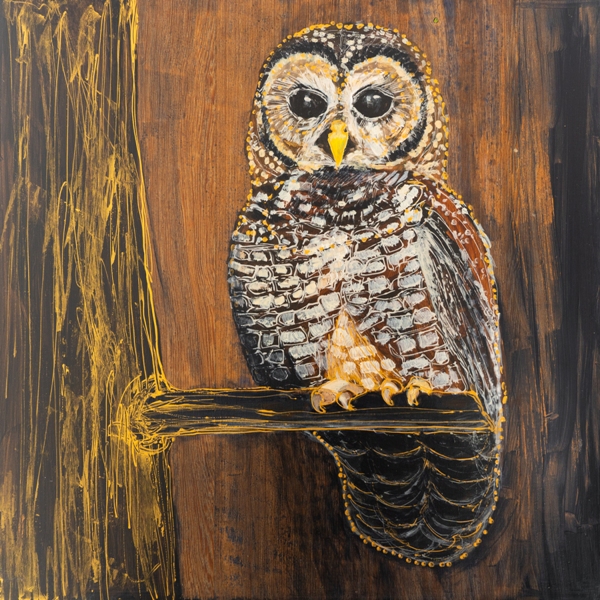
I asked myself: why did the owl become a symbol of evil associated with witchcraft, a bad omen and symbol of death? I then found some thoughts equal to mine on the Internet on different websites.
The Spaniards brought firm Christian beliefs to Mesoamerica where, in pre-Columbian times, spiritual bonds between animals and humans were formed that influenced the relationships with the gods. The beliefs of the indigenous peoples were condemned as Paganism and devilry. This happened in the sixteenth century, when the fear and persecution of “witchcraft” was deeply embedded in the Christian belief system in Europe. Nocturnal animals such as cats and owls were linked to this bad witchcraft.
There is another thought I have, which I did not encounter anywhere.
First, I thought that the Great Horned Owl (bubo virginianus) could perhaps be linked to Lechuza. This Great Horned Owl can be 43-64 cm and have a wingspan of approximately 1.4 meters with a weight of just about 1.4 kilograms. However, I came across another big owl in the Mexican/ Mexican- American region. The Mexican spotted owl (strix occidentalis lucida) has an average length of 41-48 cm, a wingspan of 107-114 cm, and a weight of 547-647 grams. This owl is smaller than the Great Horned Owl but is big enough to be impressive. It has the face of a sad old woman, can bark like a dog, cry like a baby, but it can also produce a creepy and piercing sound. For this, I think I have found the owl connected to Lechuza.
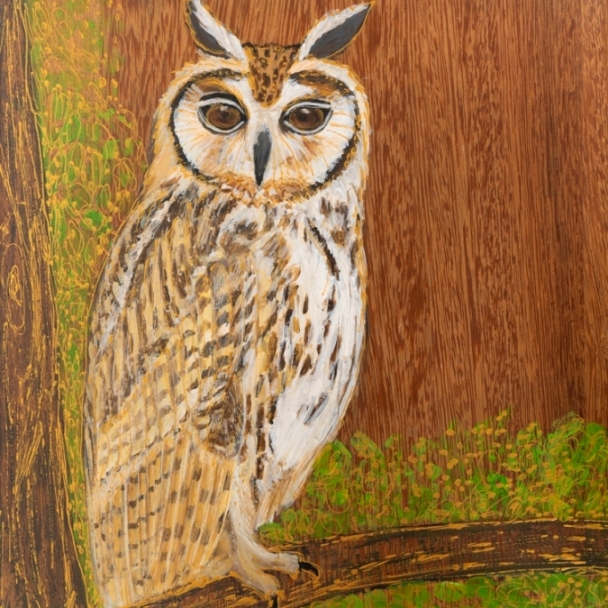
The Pre-Columbian Inca region
When the conquistadores came to South America, the Inca Empire was the largest, most advanced and wealthiest one in the Americas. As the Andes Mountains are rich in minerals, the Incas accumulated a great deal of gold and silver, and used it mostly in the form of jewelry, adornments, decorations, and artifacts for various temples. Due to the internal struggle for power between the Incas, manipulation, torture and murder, a smallpox epidemic, better weapons, more aggressiveness and, above all, an enormous greed for especially gold, the Spanish managed to conquer large parts of the Inca Empire. They confiscated gold and silver mines, and the gold and silver pieces of Inca metalworks. The latter were melted down. The gold and silver were sent to Spain. For this reason, today, a less overwhelming quantity of pre-Columbian golden pieces is seen in, for example, the Museo de Oro of Peru. But the numerous Inca ruins across the whole country of Peru, of which Machu Picchu is the most grandiose one, still show us that there once existed a fabulous civilization. This Inca heritage is so impressive that it overshadows other great and older, ancient cultures of the Peruvian region. One of these is the Moche or Mochica civilization that existed from about the year 0 to 750 AC. Some sources talk about 200 till 900 AC. It was located along a coastline of approximately 400 km, around the current city of Trujillo, in the northwest of Peru. The Mochica developed a great agricultural system by taming rivers, building large irrigation canals and aqueducts connected to the fields. They were also skilled goldsmiths in gold, silver, copper and alloys. Their pottery became well-known around the world as one of the most diverse because it varied widely in form and theme. The Larco Museum in Lima has an enormous collection of these Moche ceramics. This museum was founded in 1926 by the Larco family. Rafael Larco Hoyle began his own scientific research and excavated at several archaeological sites on Peru’s northern coast. Therefore, he is considered one of the pioneers of national Peruvian archaeology. In the late twentieth century, important finds in northern Peru followed: The Huaca del Sol (Temple of the Sun) and the Huaca de la Luna (Temple of the Moon), the burial grounds of the Lord of Sipan and the Lady of Cao. It was particularly in the pottery that the owl was recognized as an important animal to the Moche.
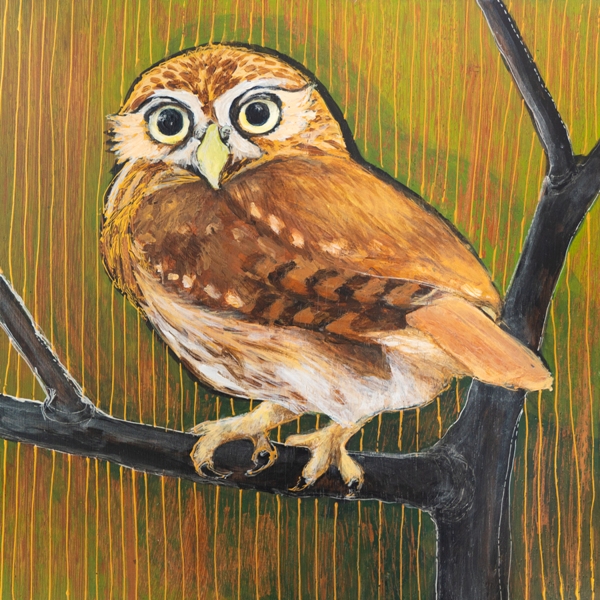
The owl in Moche or Mochica culture
Despite the numerous pieces of pottery found, there is not very much known about the culture of Moche, because they did not have any writing system, and their civilization suddenly disappeared. Archeological findings lead to plausible, proven and unproven speculations. When I visited Peru, our guide could only tell us that the owl has been an important animal because they found a lot of pottery depicting owls in the tombs at the burial grounds.
Based on the Andean cosmovision and the archeological findings, especially the Moche pottery, I came up with my own theory.
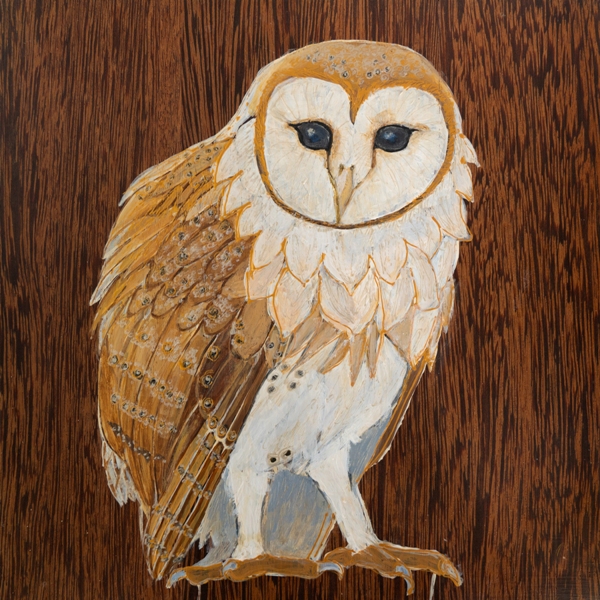
According to ancient Andean philosophy the world is divided into three levels: The Upper World, the Living world and the Lower world or Underworld. (In Quecha, native language: World = Pacha; Upper World = Hanan Pacha; Living World = Kay Pacha; Underworld = Ukhu Pacha.) However, the word Pacha means more than just ‘world’; it also encompasses space, time and consciousness. In this Andean cosmovision, consciousness is not separated from the unconsciousness or the spirit. There is a flow of energy between nature and the cosmos connecting everything together and, although the universe is divided into three levels, these three worlds are all interconnected. Energy travels spatially across the three worlds to establish communication and connection among different subjects and objects. Pachamama (Mother Earth) is a significant form of this energy and offers life to every living being inside the cosmos. The Upper World consists of things, such as the stars and the sky, and the energy here is the strongest. The Living World is the place in which we live, existing in between the upper and lower worlds and the energy is moderate, flowing among the living beings. The Lower World is the inner world, which is linked to the dead and the pathway of new life. After somebody dies, his spirit will not disappear and he can choose where he wants to go. If he has unfinished business in the Middle World (Kay Pacha), his spirit can stay longer than his body until he has completed all of his business. Then he could decide to reach the Upper World (Hanan Pacha), which represents the highest realm one can obtain. Otherwise, he could go to the Lower World (Ukhu Pacha), world of supay (demons) as a punishment, but there is also a connection between the lower and middle levels (Ukhu Pancha and Kay Pancha) and new life is offered by Pachamama.
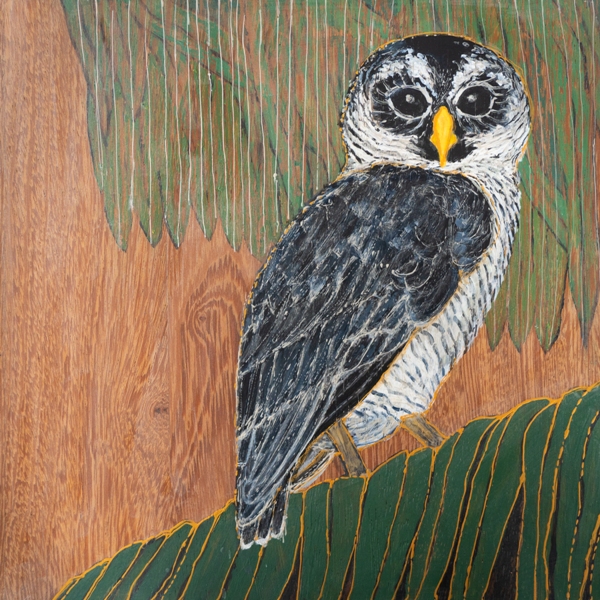
Considering the dozens of owls in the graves of the Mochicas, you could perhaps assume that such a group of owls was considered very suitable to accompany the deceased in choosing the right path after death. This matches my perception of the wise owl completely. But at the wonderful Royal Tombs of Sipan Museum, after looking closely in at least two glass cases, I did not recognize owls, but animals with a snout instead of a beak. Nevertheless, due to the archeological findings, the owl seems to have been quite a popular bird in Moche culture.
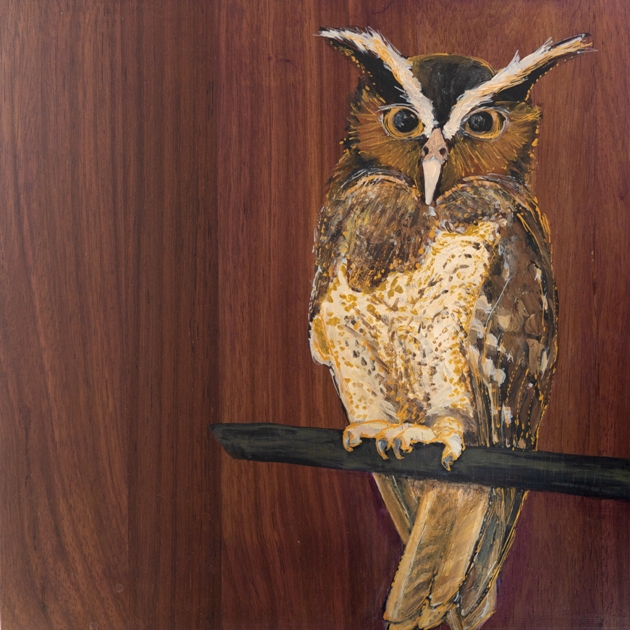
Proverbs and sayings
There are quite a few proverbs and sayings including an owl. I would like to share some interesting ones.
- Bringing or sending owls to Athens: Doing something that is a waste of time or just completely pointless.
- As stewed as an owl: after drinking too much alcohol, being very drunk or heavily intoxicated.
- A night owl:A person who stays up late at night and does not wake up early in the morning, which is the opposite of an early bird, a person who generally goes to bed and wakes up early.
- As wise as an owl: The person is very wise and intelligent. This is one of the most common owl sayings and is linked to the owl of Athena.
- There is also a very old saying in Dutch: “Je bent een uilskuiken”. Translated somewhat literally in English:” You are the baby or chick of an owl”. But the real meaning is: “You are stupid and silly and foolish; you are a nincompoop; you are a dimwit.”
